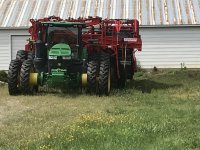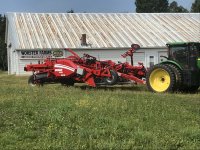Thanks to both of you for your explanations. I've heard of no till for years yet have always wondered how it works. I know all too well how well weeds do in tilled ground.
Farming here is on a much smaller scale, and down where I grew up most of the dairy farms are now shopping malls. Yet I remember in HS, hearing some of my classmates laughing because somebody snuck into the field and stole a few dozen ears of fodder corn... I suspect they never did that again.
Farming here is on a much smaller scale, and down where I grew up most of the dairy farms are now shopping malls. Yet I remember in HS, hearing some of my classmates laughing because somebody snuck into the field and stole a few dozen ears of fodder corn... I suspect they never did that again.

